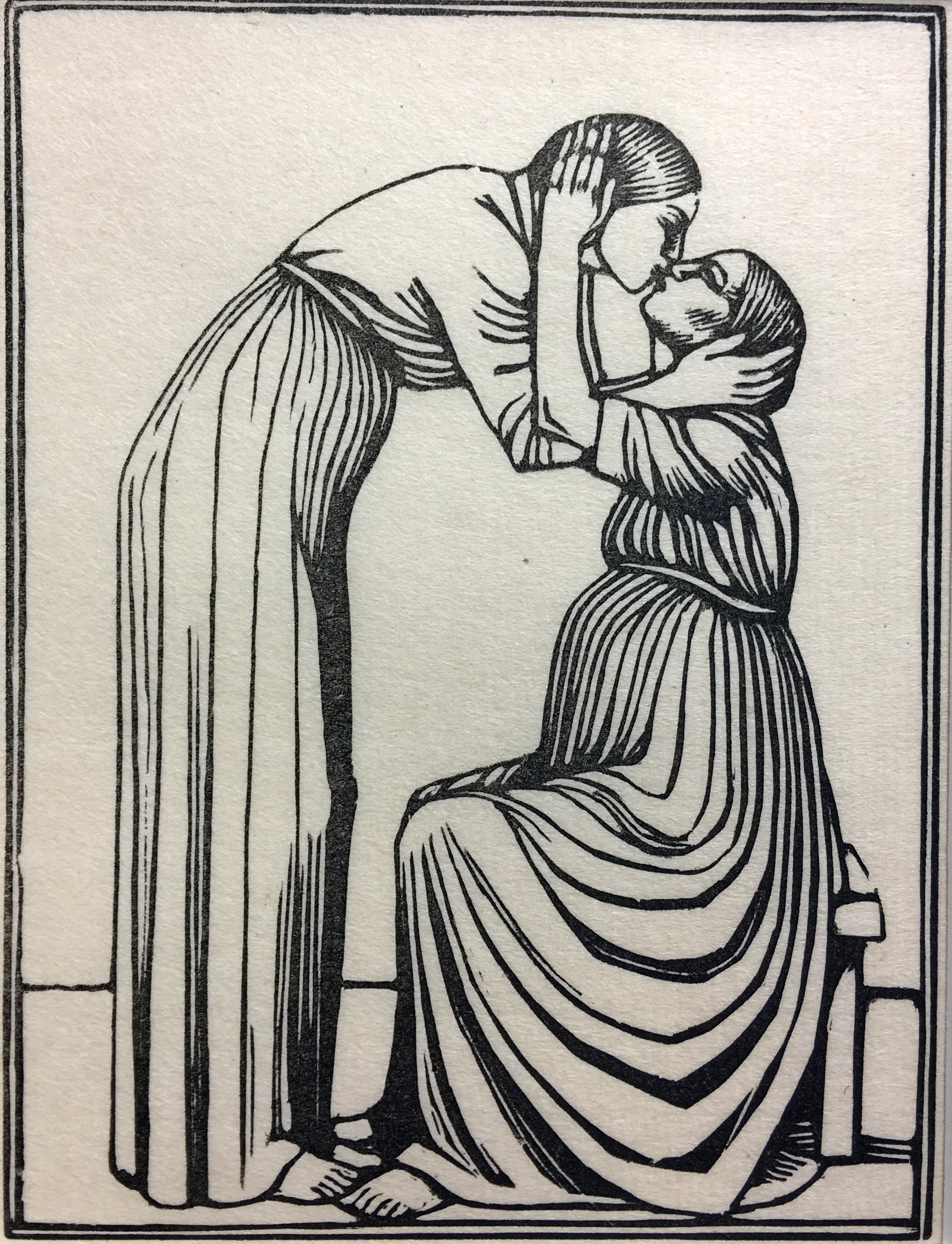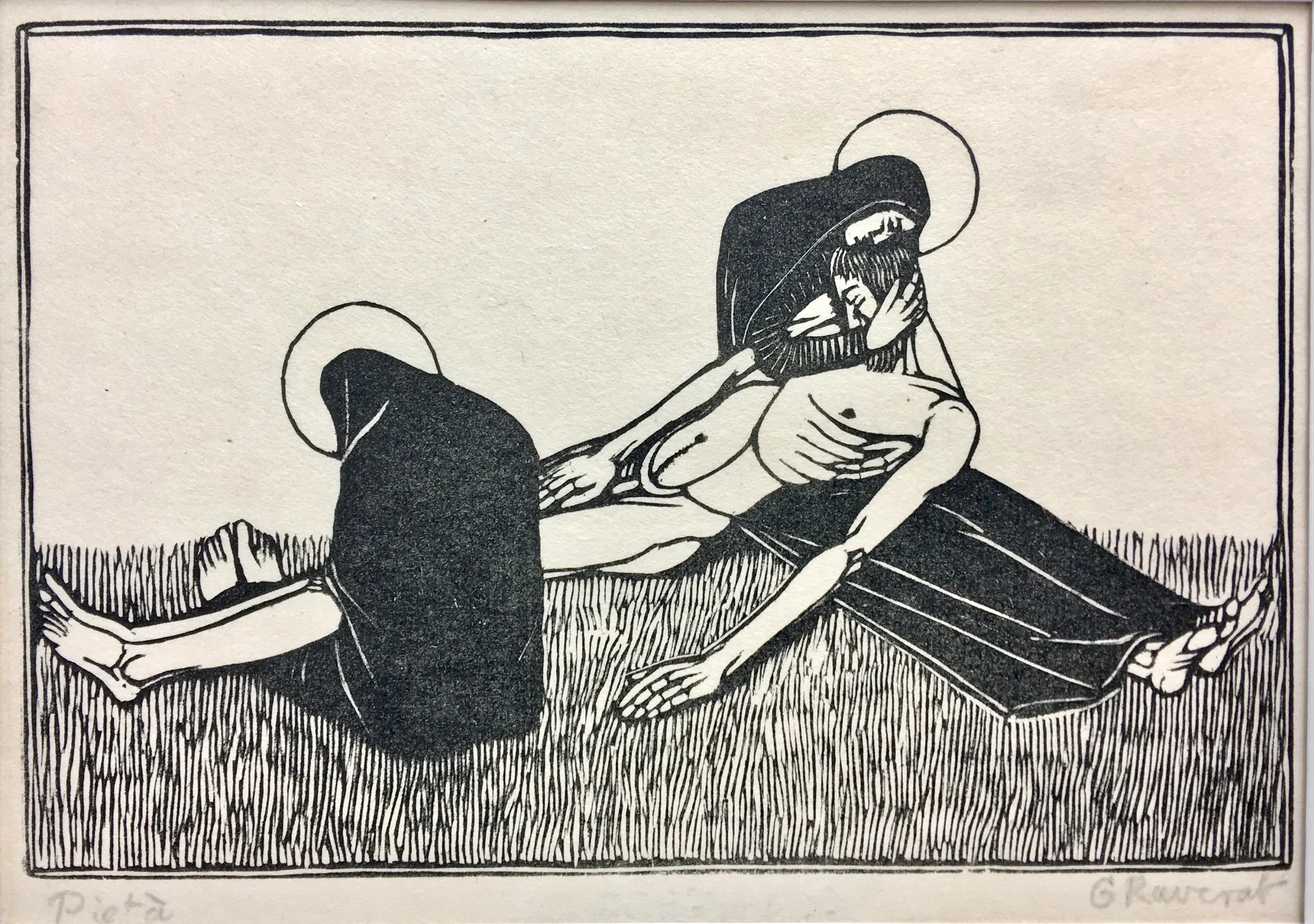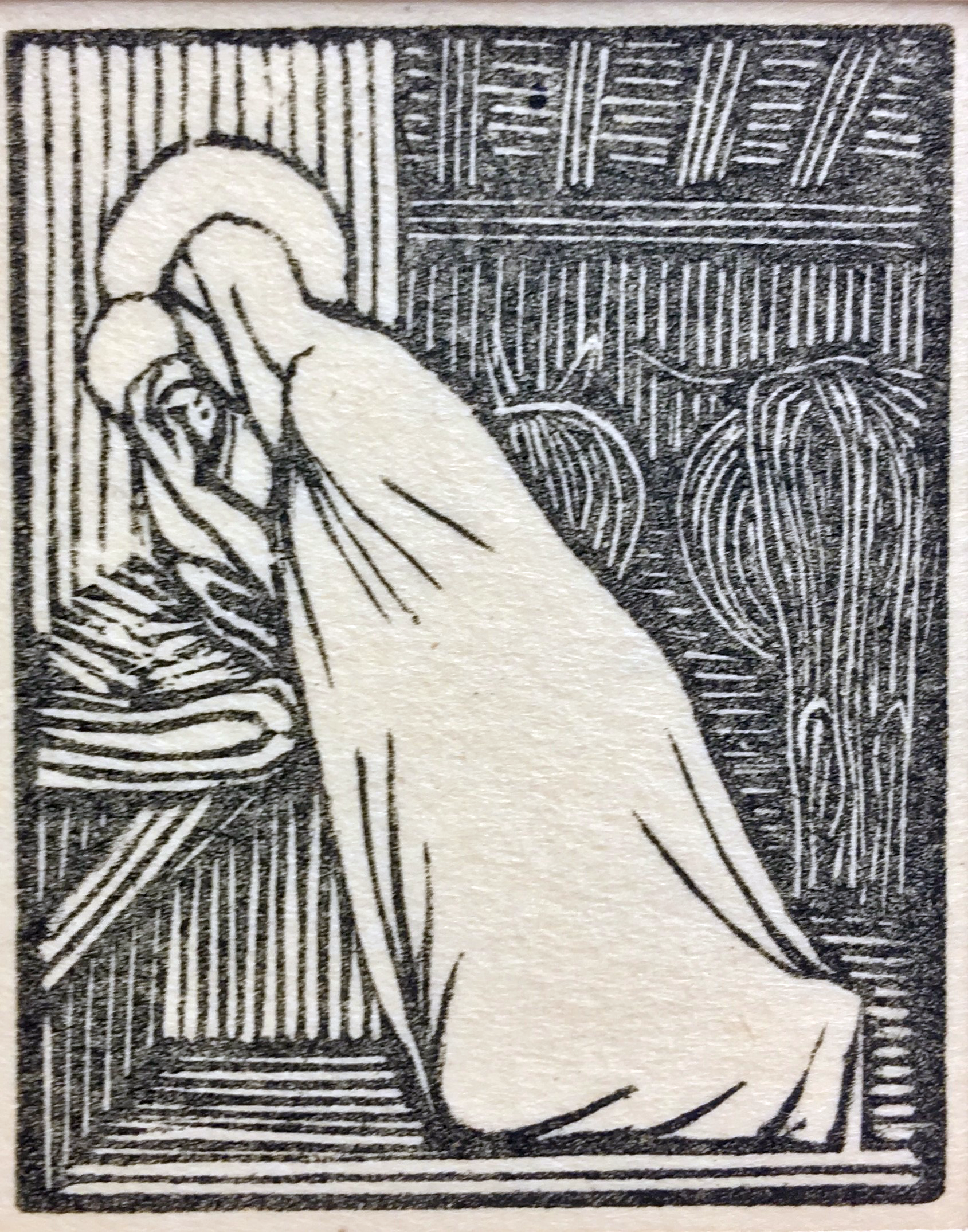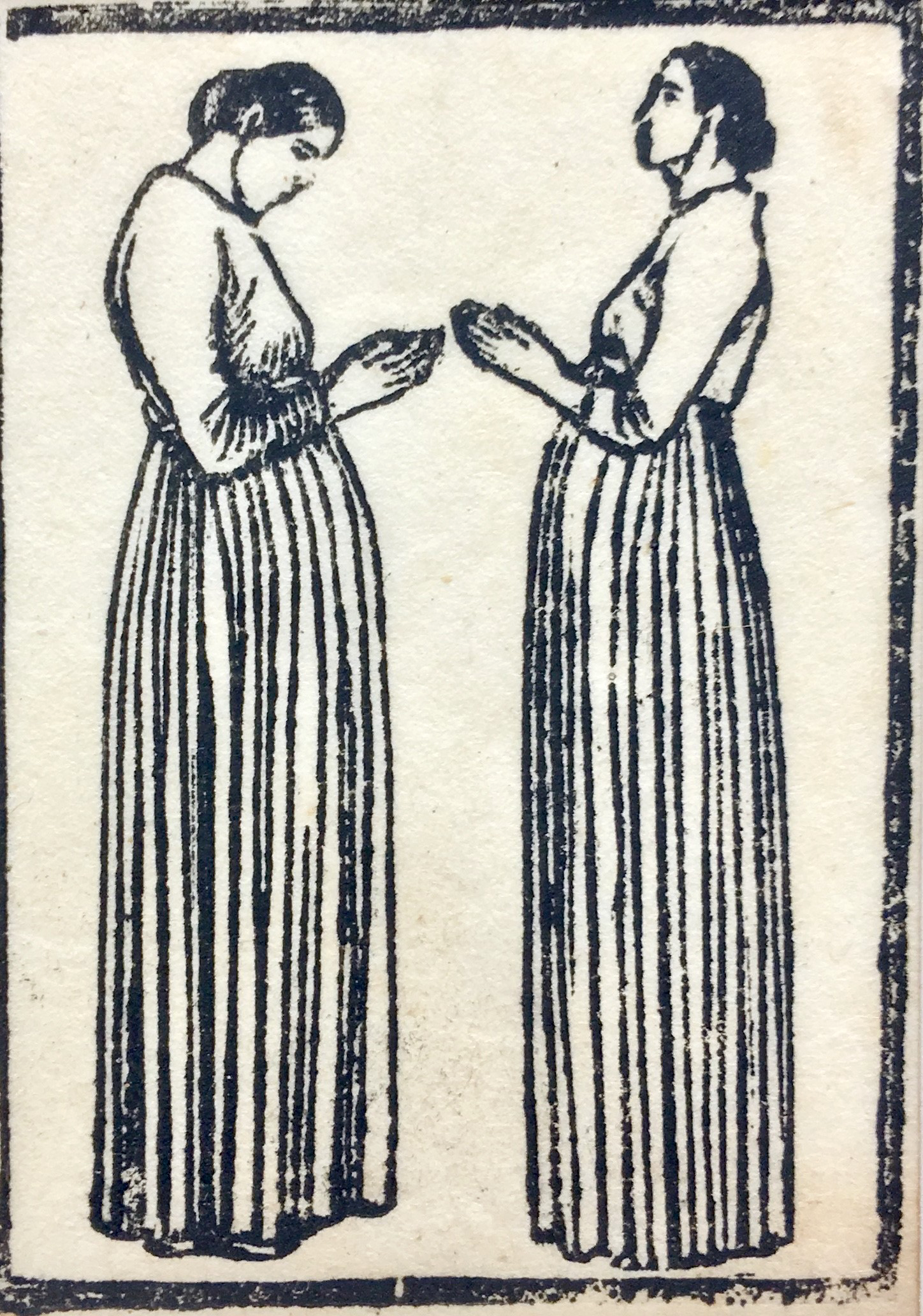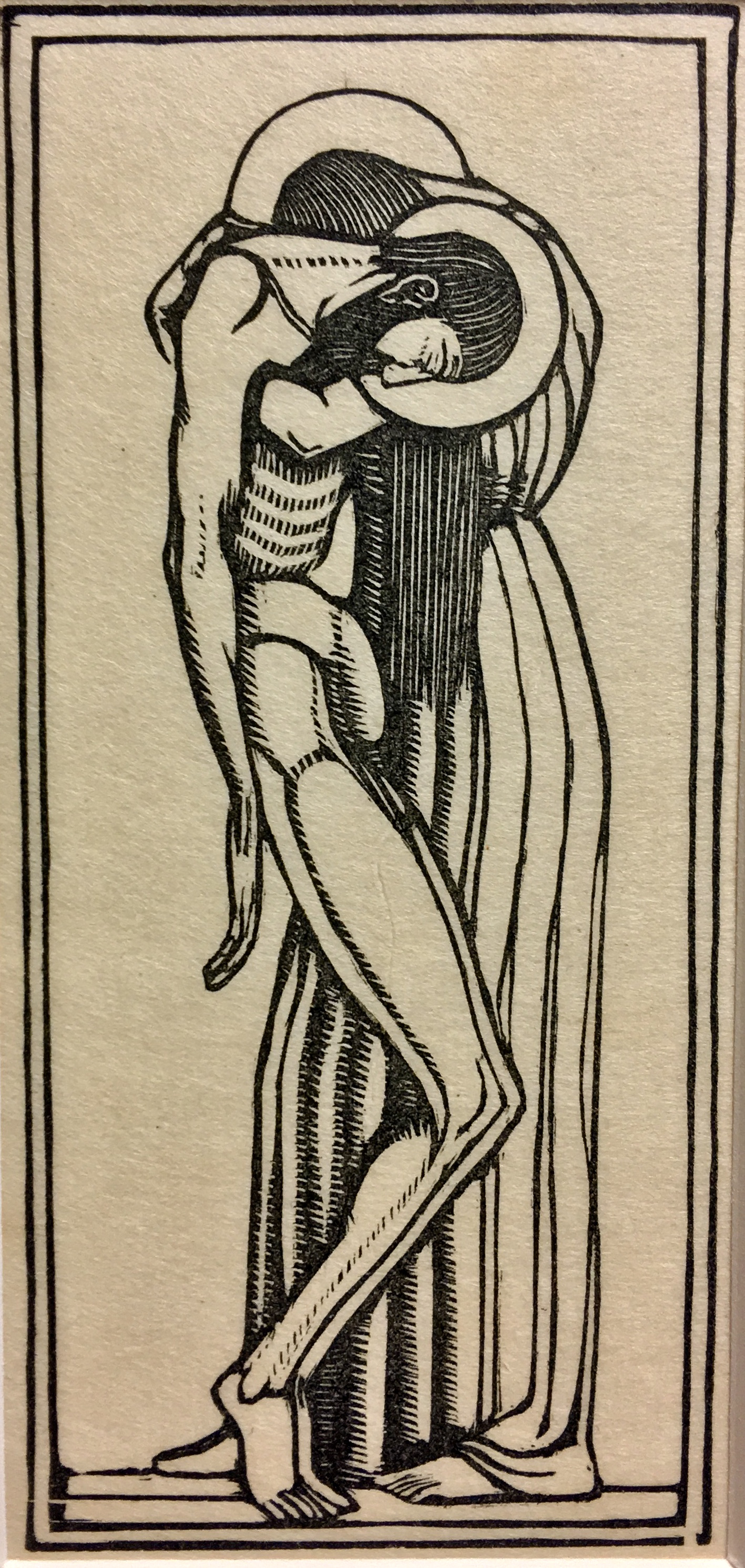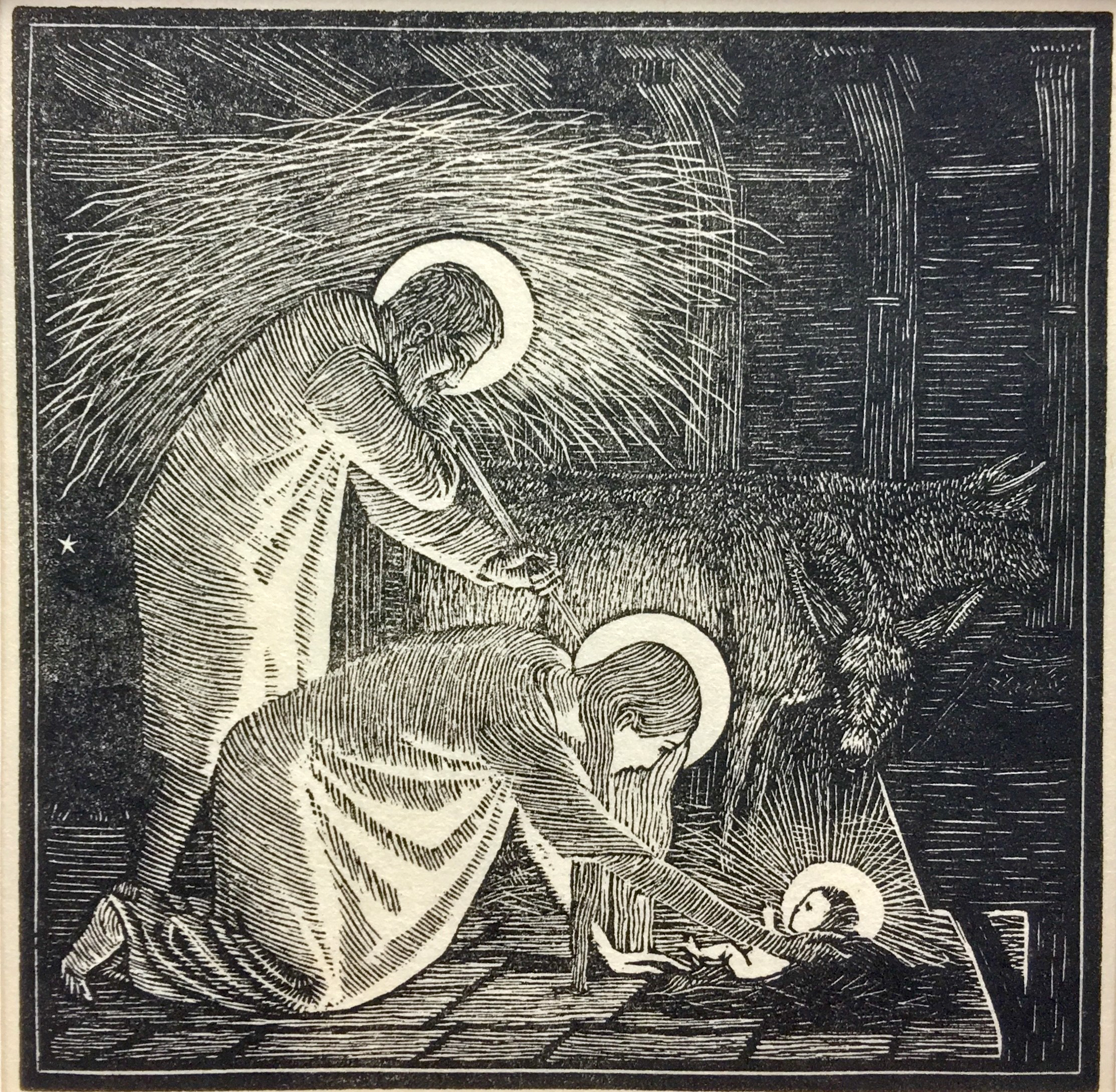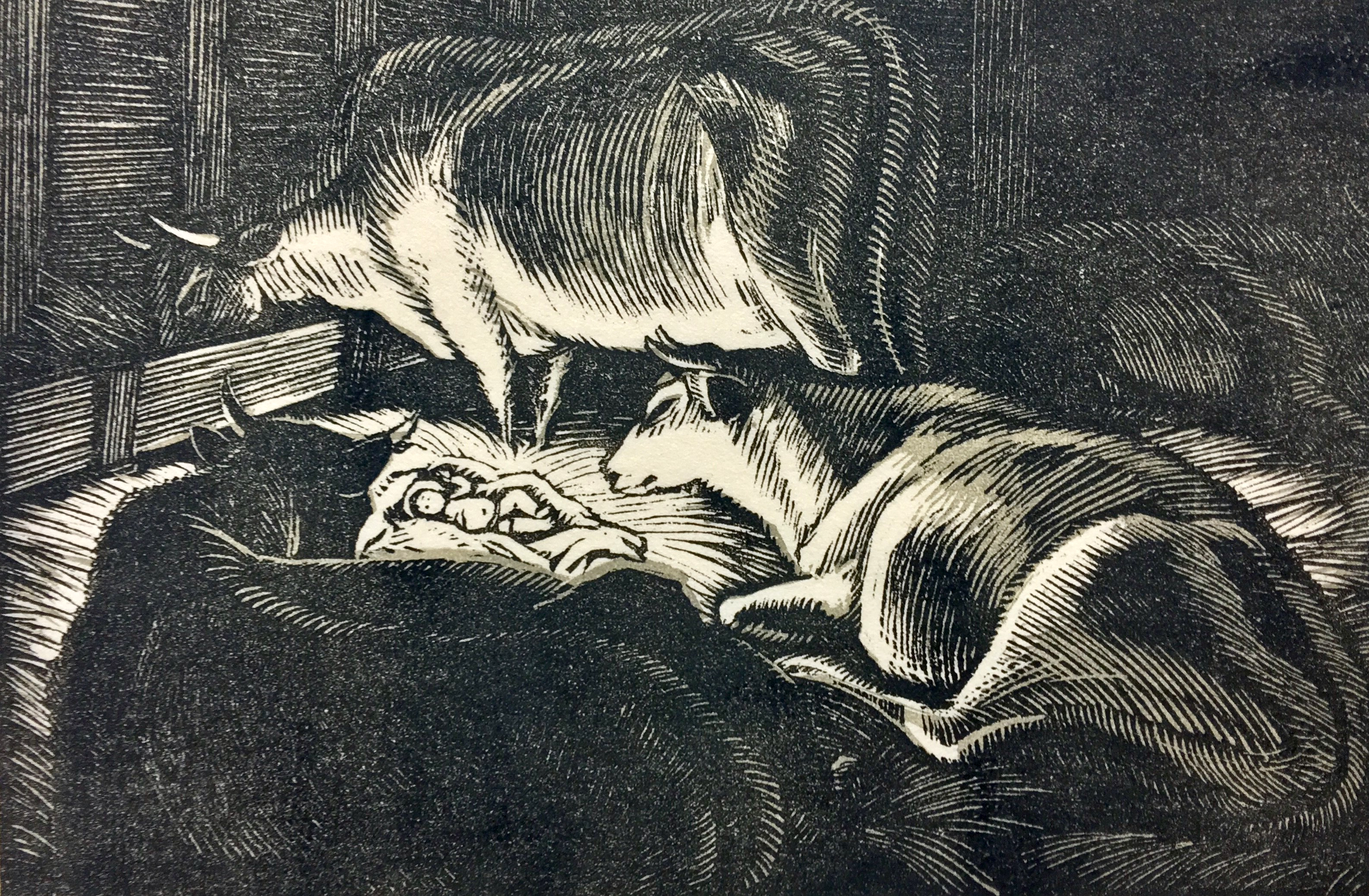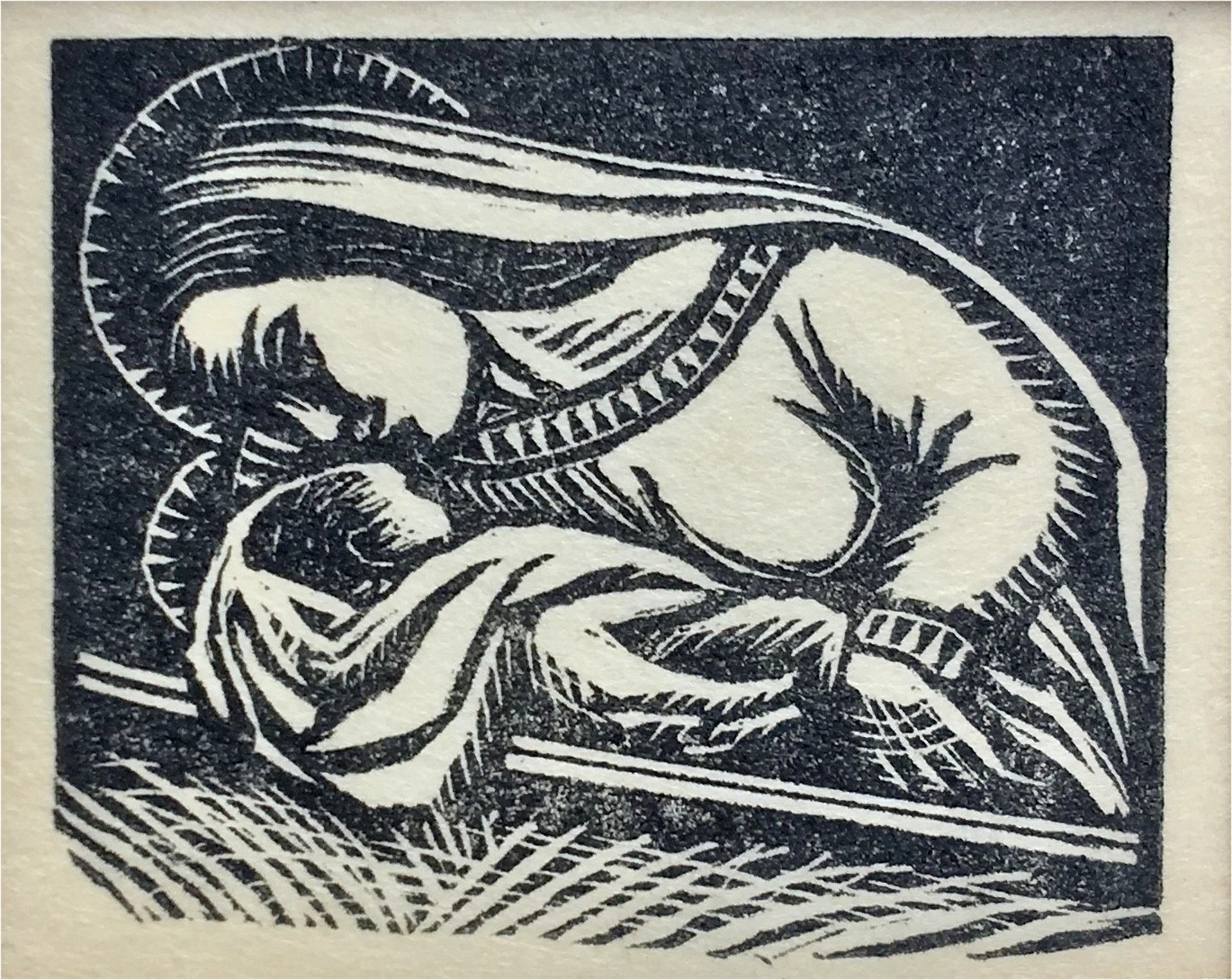Blogs
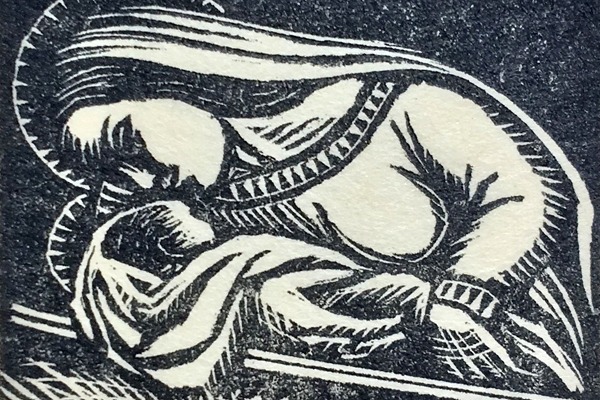
The Marian Library Acquires Seven Works by Gwen Raverat
By Olivia Gillingham, Library Specialist in the Marian Library
With the recent acquisition of works by Eric Gill and now seven more wood engravings by Gwen Raverat, the Marian Library is developing quite a collection of Arts and Crafts Movement prints. This artistic movement, which began in the late 19th century and flourished in the United States and Europe until around the 1920s, was concerned with reviving traditional craftsmanship through decorative arts, especially in resistance to industrialization.
Gwen Raverat was born in 1885 in Cambridge, England to George Darwin, son of Charles Darwin and professor of astronomy, and Maud Darwin, an American socialite. Raverat started drawing at age 10 and began her studies at the Slade School of Fine Arts in 1908. Though wood engraving had captured her attention, there was little interest in it at the Slade during the time she studied there, and she had to seek instruction for this particular technique elsewhere. Luckily, her cousin Eleanor Monsell shared her interest in wood engraving and was able to pass her knowledge on to Raverat.
After her study at the Slade, Raverat moved on to the Sorbonne in Paris where she met and married fellow student Jacques Pierre Raverat. It was likely from living in Paris, and later the south of France, that Raverat picked up her impressionistic style and technique of wood carving, having been exposed to French impressionist painters and their work. Her mature work (pieces completed between 1920-25 particularly) shows the influence of the Impressionists and Post-Impressionists through the fluid, painterly style of engraving. It avoids the stark contrast of black and white spaces used by contemporaries like Eric Gill or Robert Gibbings in favor of a more grey tonality with softer transitions between forms, and an expert handling of light in each piece.
Thanks to the most recent acquisition of Raverat’s work, the Marian Library has pieces that show the transition of the artist’s style from one which, earlier on, appears similar to Eric Gill’s, to a more impressionistic style after the time she spent in France. In pieces like Pieta and The Dead Christ, completed in 1912 and 1913 respectively, there is a greater contrast in the black and white forms and background. In later works like The Cow’s Christmas (1931) a more painterly style and mastery of light is evident.
Raverat was a founding member of the Society of Wood Engravers in 1920, which aimed to promote the creation and appreciation of original wood engravings designed and engraved by the artist. Previously, wood engravings had largely been recognized only as a means of reproducing paintings or drawings, and were engraved by craftsmen, not the artist.
Most of Raverat’s subject matter was focused on landscape and figures, but she explored many religious themes throughout her career as well. The Marian Library’s holdings of her work center on subjects of the Visitation and Nativity as well as two representations of the pietà.
See all 8 works by Raverat the Marian Library owns in the gallery below. You can also visit https://www.raverarts.com/gwen-raverat/ or take a look at A History of British Wood Engraving to learn more.

